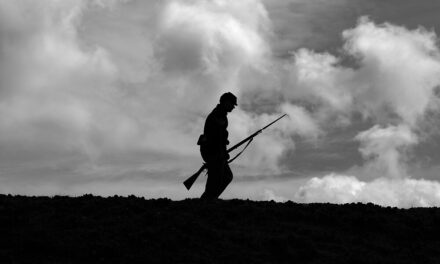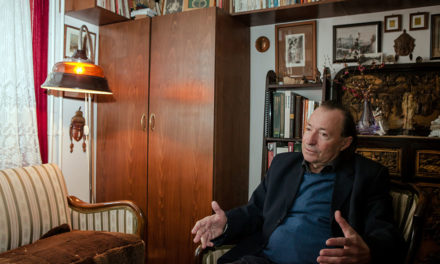31 years ago. On April 8, 1990, in the second round of the first free parliamentary elections, it was decided that the parties bringing together popular forces, conservative, Christian citizens and Westerners representing traditional values could form a government under the leadership of Dr. József Antall.
It was a "kamikaze government", as he himself put it. The government of the pacts, which carried in its germ the rescue of the communist nomenclature, a kind of sharing of power with the liberal forces led by the SZDSZ, and gave Horn's restoration a street-length advantage.
But was there any other choice? "They would have liked to make a revolution," the prime minister told the people who criticized him. The people made a revolution! The revolution of "Quiet Power" and the silent majority, which were never revolutions of blood and iron before, in contrast to the Leninist-Stalinist coups of the left, which were based on violence and even declared it, and then introduced a dark dictatorship, Béla Kun's open and cunning Rákosi taking over.
March 15, 1848 was almost a poetic revolution. They didn't draw swords, people just gathered, under their umbrellas or on their heads, listened to the National Anthem, the 12 points, accompanied the young revolutionaries to the Landerer printing house, up to the Castle to the governor, printed a newspaper, and lived the freedom. Even in 1956, smiling, liberated people marched through the wide streets, cutting out the communist coat of arms from the flags, listening to the 16 points, in which they demanded a multi-party system, the withdrawal of the Soviets, a free press and democracy. And the reigning, lawless power always "deigned to tremble!"
These revolutions were suppressed by the occupiers and their domestic henchmen with the cruel tools of terror. And the winking Kádár declared even in the mid-seventies, when he was accused of stopping the 1968 reform, that Hungary still had a proletarian dictatorship.
According to Antall, the MDF-SZDSZ pact made governability possible, and he may have been right in that the provisional constitution created in the fall of 1989 was already in force at the time. (Warning! As a concession to the communist Németh government!) This regulated the scope of 2/3 laws in such a way as to make simple majority rule significantly more difficult. The pact dated April 28 was not even made public until after the formation of the new parliament, on May 3. (Of course, there were and still are conspiracy theories about other pacts, such as the so-called Rose Hill, according to which the major powers and Israel's secret services allegedly set the schedule for the regime change, but this remains just an urban legend.)
Why did the pact become a dragon's tooth crop? Well, first of all, he divided the power that the voters, as a responsibility and a right, gave to the conservative forces. As the president of the republic, Árpád Göncz occupied a strong position, he tried to obstruct the government's activities in everything, together with constitutional judge László Sólyom, who was the basis of the 1949 (temporarily refined) constitution.
Elemér Hankiss, at the head of the television, did not allow the Prime Minister to inform the people about the situation of the robbed country on August 20, then Iván Pető, the frontman of the SZDSZ, organized a violent taxi blockade, which József Antall's statement on his hospital bed and the "Quiet force" again it was only ended by his quiet but constantly provoked retreat. The pact brought with it a media war and the rapid disintegration of conservative forces.
According to some, József Antall entrusted Hungary to Viktor Orbán on his deathbed. "Don't forget what we fought for," he said. The fact that he invited the president of Fidesz, which at that time had already taken a successful conservative turn, is indicative in itself.
Orbán broke with pact politics. In 2000, a conservative teacher became the president of the republic, in the person of Ferenc Mádl, and in 2010 a new constitutional process was launched, which was made possible by the authorization of two-thirds of the people. He put an end to the open invasion of the nomenclature and the plundering of the country. He confronted the Gyurcsány regime, which was based on lies and controlled by the Apro clan, and if the "Quiet Force" dared to protest, it responded with eyeballs and imprisonment.
The opposition - following its historical traditions - from the extreme left to the extreme right now wants to overthrow the government with a worthless pact. He does all this at a time when a terrible epidemic is ravaging the country, when everything should be put aside, division, salami, threats, and save what and who can be saved. As Babits writes in the midst of the great war, "let those who live, let them live...let the poor people hope!"
The responsibility and the right belong to the fourth Orbán government, and Hungary is a democracy. This is what Tibor Navracsics, who is perhaps most respected by the left and wants to be presented as a European opposing Fidesz, recently said to a provocative journalist's question. It doesn't work! The left-liberal side - Jobbik already belongs to this, doesn't it, and in fact, according to Csurka, has always belonged to it - according to its good habit, it acts as the enemy and threatens everyone with the slogan "to completely erase the past": if it comes to power, there will not even be bread on the table of the "Fidesz".
However, the "Quiet force" will decide in a year!












